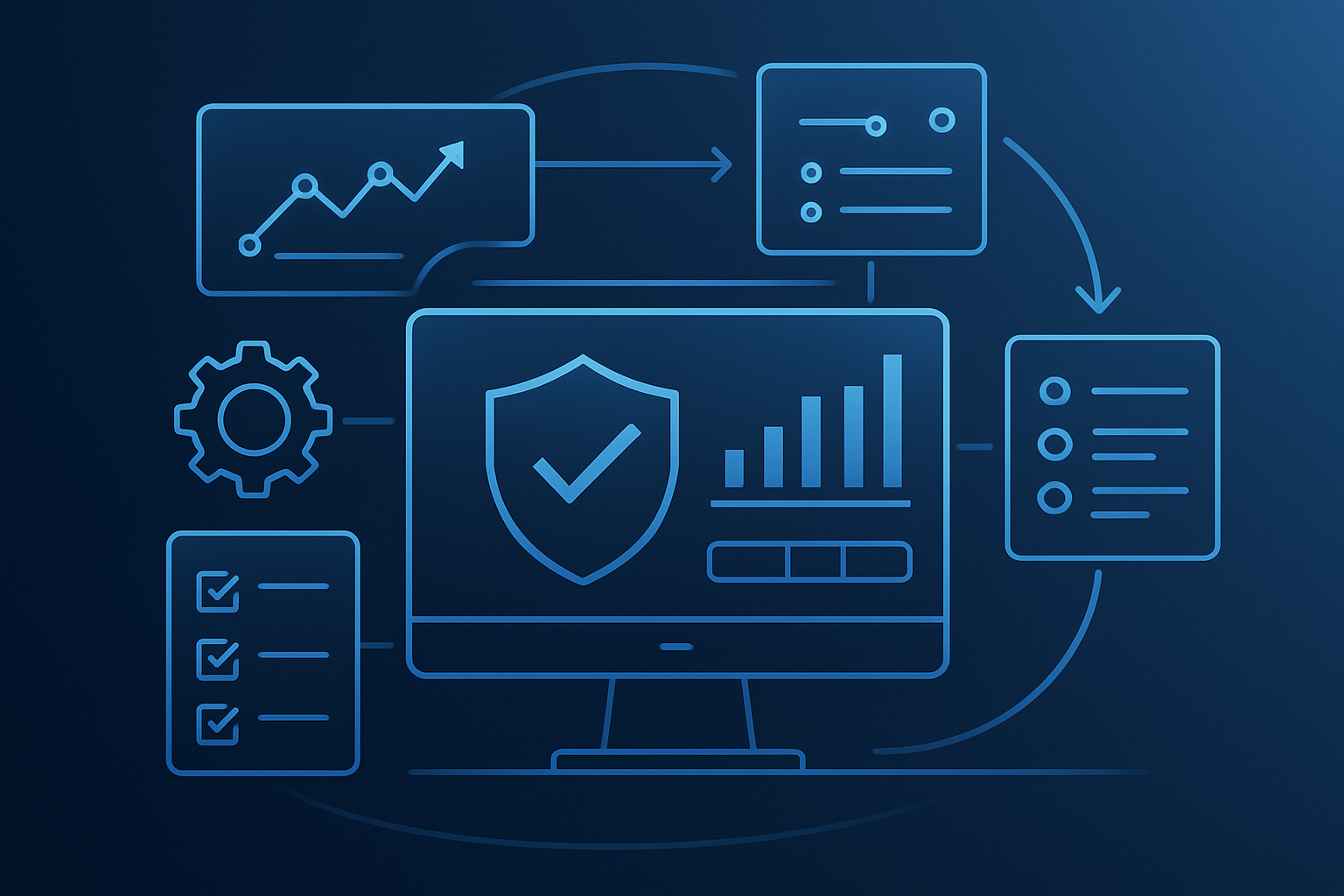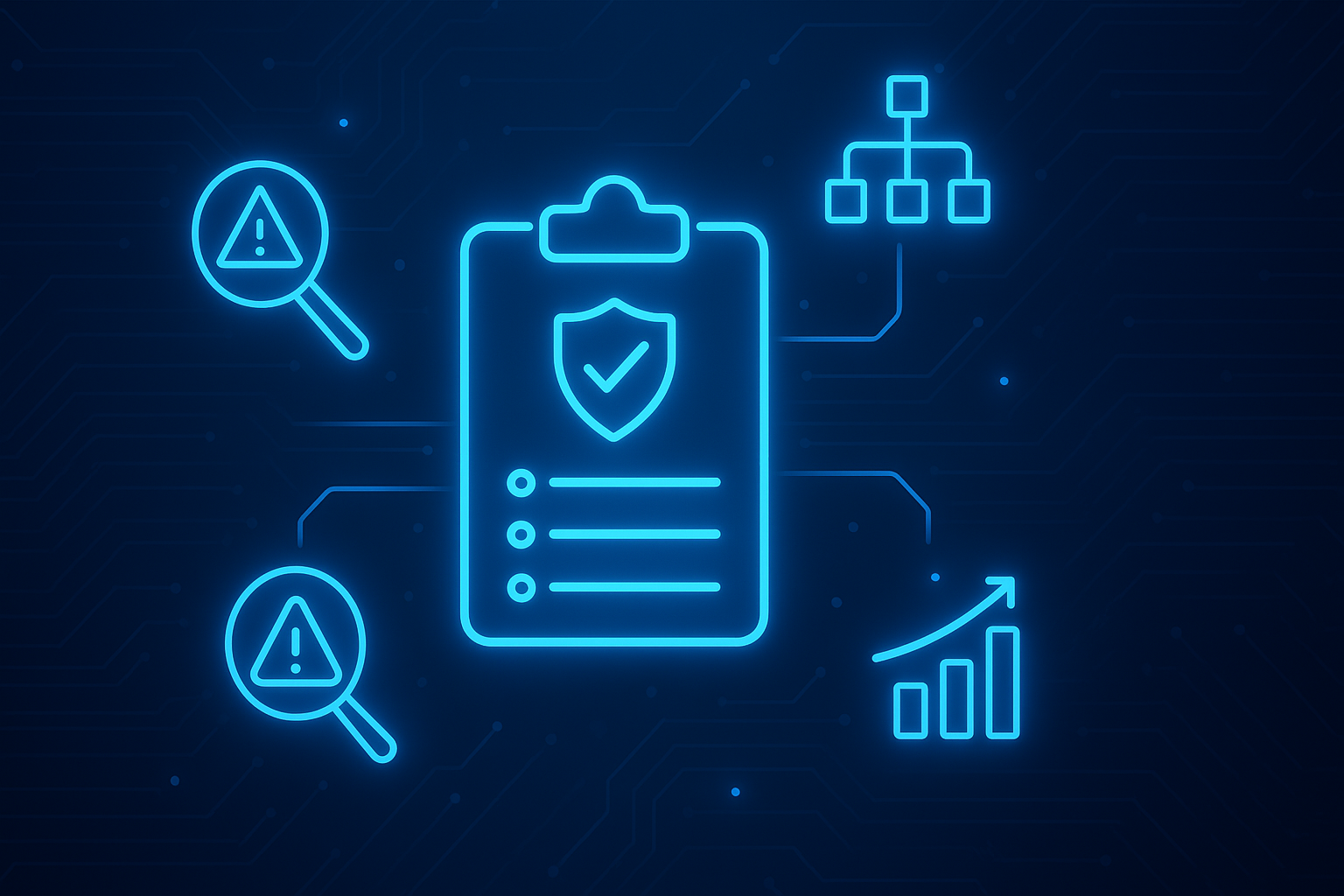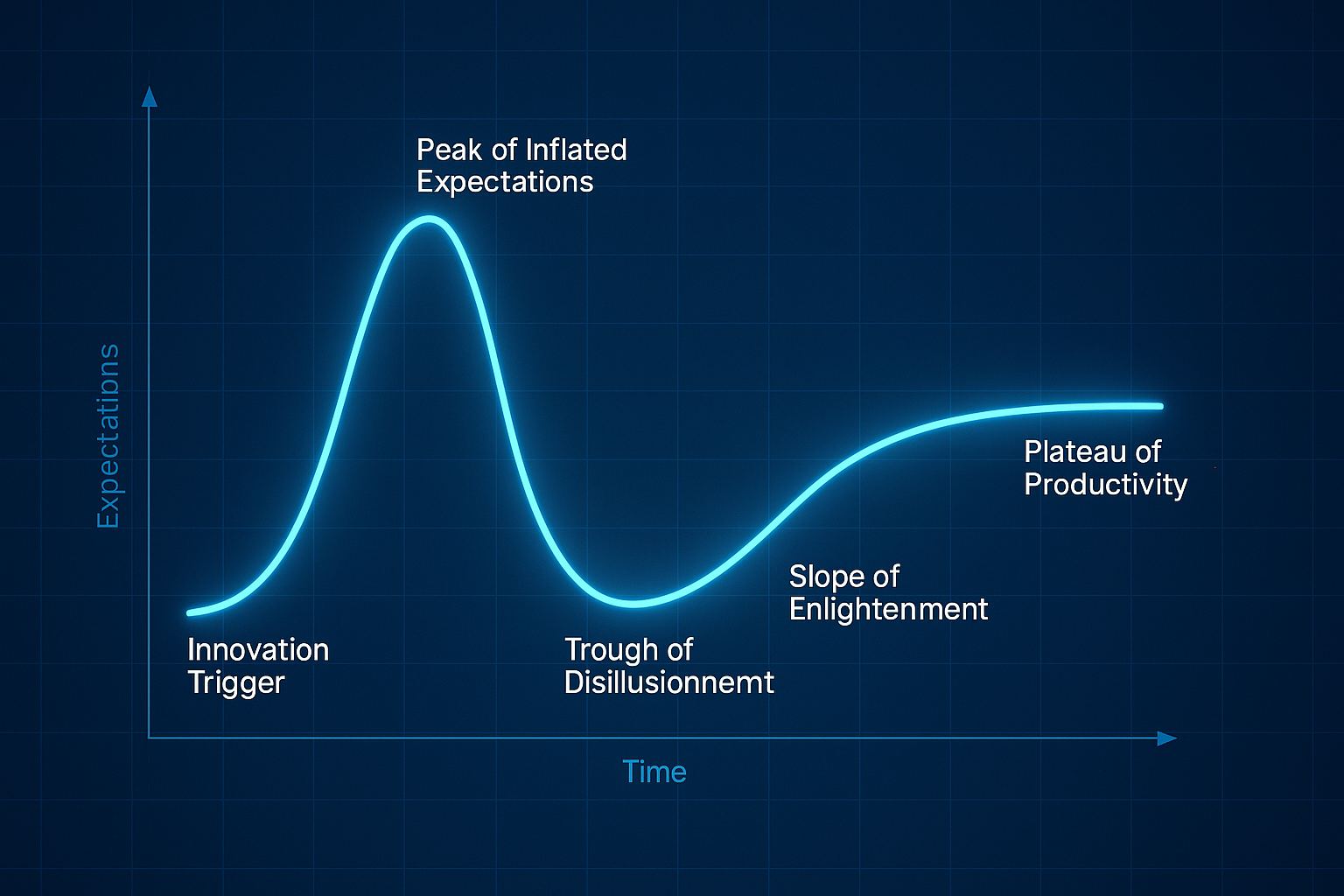Cyber risk assessment is the heart of modern cyber risk management. In 2025, as enterprises face AI-driven attacks, record ransomware volumes, and regulators demanding operational resilience, the ability to assess cyber risks in business and financial terms has become mission-critical.
Why Cyber Risk Assessments Matter
A cyber risk assessment is the foundation for every effective cyber risk management and compliance program. Done right, it answers key questions:
- What risks does the organization face, and how severe are they?
- Which vulnerabilities and control gaps most threaten critical business operations?
- What is the financial exposure tied to each cyber risk?
- Where should scarce resources be allocated to deliver maximum risk reduction and ROI?
Weak, manual, or fragmented approaches — such as spreadsheets, point solutions, or siloed assessments — leave organizations blind to their actual risk exposure. This problem is exacerbated in today’s climate, where attackers use AI to scale phishing attacks and exploit zero-day vulnerabilities. The average cost of a Ransomware breach has surpassed $2 million and is expected to worsen as Ransomware-as-a-service (RaaS) gains traction. Boards are directly accountable for cybersecurity oversight.
What’s Needed in a Robust Cyber Risk Assessment Solution
In 2025, the bar is higher than ever. A strong cyber risk assessment capability must be:
- Connected: Linking risk, compliance, and security data in one system.
- Continuous: Fed by real-time telemetry, not static snapshots.
- Quantified: Translating risks into financial terms for executives and regulators.
- Automated: Reducing manual effort in evidence collection, mapping, and reporting.
- Actionable: Guiding prioritization, remediation, and return-on-security-investment (RoSI) decisions.
Cyber risk assessment is not just a compliance checkbox. It is the engine that drives the full lifecycle of cyber risk management, from control monitoring and risk register management to quantification, board reporting, and strategic planning. With geopolitical cyber risk on the rise, and regulators in both the U.S. and the EU tightening requirements around resilience and reporting, organizations cannot afford outdated, manual, or siloed assessment strategies.
Learn about the NIS2 Directive and DORA regulation here.
7 Solutions to Consider for Cyber Risk Assessments in 2025 and Beyond.
1. CyberSaint – Connected, Continuous, and Quantified
CyberSaint was purpose-built for cyber risk management, not bolted onto another IT function. Its automated risk assessment capabilities sit at the center of the CyberStrong platform, powering compliance, risk, and security operations in a single platform.
Call-Out Features
- Automated Crosswalking: AI-driven mapping across frameworks (e.g., NIST, ISO 27001, NIS2, PCI DSS) reduces manual mapping effort.
- Manual mapping often leads to gaps or errors that auditors catch later. CyberStrong also offers crosswalking templates that are continuously updated and validated, ensuring audit-ready accuracy.
- When a control is mapped across frameworks, CyberStrong automatically displays its impact on the risk posture, allowing security leaders to prioritize where it matters most.
- Continuous Compliance Automation: Ingests telemetry data across the enterprise to keep assessments up to date.
- Using continuous control monitoring (CCM), CyberStrong provides real-time updates on your compliance posture, enabling you to lead and grow strategically.
- Model-Agnostic CRQ: FAIR, NIST 800-30, actuarial models embedded directly into assessments for dollar-based outputs.
- You can’t communicate technical severity without context. CyberSaint auto-translates risk data into financial terms, helping you report transparently, secure budget, and prioritize your contextualized findings with confidence and business alignment.
- Dynamic Risk Register: Risks tied to controls, telemetry, and quantification for ongoing management.
- Centralize all your risk data in a real-time, up-to-date risk register. Empowering you to make decisions on the most accurate representation of your entire compliance and risk posture.
- Executive Reporting: Dashboards and reports align risks with business impact, enabling board-level decisions.
- Board scrutiny is growing. You need to deliver clarity on which investments to make, why you need to make them, and your growth strategy. If you’re in perpetual firefighting mode with manual compliance, you’ll never be able to deliver a strategic plan to your stakeholders.
Why CyberSaint Leads
CyberSaint delivers the full lifecycle of cyber risk assessment: identifying risks, tying them to real-time control data, quantifying financial impact, benchmarking against peers, and guiding remediation with RoSI analysis. While competitors specialize in slices of this lifecycle, CyberSaint unifies the entire process in a single platform, which is critical at a time when regulators demand proof of resilience, and boards seek clarity on ROI for security investments.
2. LogicGate
LogicGate’s Risk Cloud is a flexible platform that excels at workflow and process automation. Organizations use it to manage governance and compliance tasks through customizable workflows.
Strengths
- Flexible, no-code workflow builder.
- Strong for GRC process standardization.
Challenges
- Risk assessment capabilities are largely qualitative and workflow-based, rather than quantitative metrics.
- Heavy reliance on customer-defined workflows can lead to inconsistent practices.
- Risk reporting lacks financial context, which is increasingly important, as regulators and boards demand impact-based metrics.
3. Safe Security
Safe Security focuses heavily on Cyber Risk Quantification (CRQ), positioning itself around its SAFE score that measures enterprise cyber risk.
Strengths
- Strong quantification models.
- Emphasis on financial risk outputs.
Challenges
- Operates primarily as a standalone CRQ tool, not tightly integrated with compliance or security operations.
- May lack the connected data context that links controls, threats, vulnerabilities, and assessments.
- Risk outputs can feel disconnected from daily operational realities, which is a liability given today’s surge in AI-enhanced threats and cloud misconfigurations. Safe’s quantitative insights are not contextualized for real-world action.
4. Balbix
Balbix focuses on attack surface management and vulnerability prioritization. Its platform identifies weaknesses across IT environments and assigns a breach likelihood score to each.
Strengths
- Strong AI-driven vulnerability prioritization.
- Effective for tactical risk reduction at the technical level.
Challenges
- Focus is tactical rather than strategic. Balbix does not provide executive-ready financial assessments.
- Assessments are heavily vulnerability-driven, often overlooking compliance, governance, or control context.
- Limited ability to link risks to business outcomes, which is vital, as ransomware and geopolitical threats increasingly disrupt operations.
5. ServiceNow
ServiceNow offers cyber risk management as part of its larger IT service management ecosystem.
Strengths
- Broad integration with IT workflows.
- Centralized platform for enterprise IT operations.
Challenges
- Risk is not a core competency, often leading to bolt-on assessment modules.
- Quantification is limited compared to dedicated platforms.
- Assessments risk being process-driven rather than risk-driven, which may not withstand today’s regulatory scrutiny.
6. Vanta & Drata
Vanta and Drata have emerged as leaders in audit automation, helping organizations quickly achieve SOC 2, ISO, and other certifications.
Strengths
- Fast evidence collection and audit preparation.
- Automation reduces time spent on compliance reporting.
Challenges
- Assessments are shallow and audit-focused, not robust risk assessments.
- Little to no financial quantification.
- Risk management features are limited compared to enterprise-grade platforms, making them insufficient for addressing ransomware, AI-enhanced attacks, or geopolitical threats.
7. SentinelOne – Endpoint-Centric View
SentinelOne is a leading endpoint detection and response (EDR) solution. Its risk-related capabilities are tied to endpoint telemetry.
Strengths
- World-class EDR capabilities.
- Surfaces endpoint-level risks effectively
Challenges
- Focused narrowly on endpoint risk, not enterprise-wide risk.
- Limited compliance and governance features.
- Does not deliver complete lifecycle risk assessments or quantification, which enterprises need to withstand today’s surge in multi-vector attacks.
Core Capabilities to Consider When Choosing a Cyber Risk Assessment Tool
When evaluating automated cyber risk assessment tools or solutions in 2025 (and planning ahead for 2026), look for these essential capabilities:
- Integration Across Frameworks and Regulations
- Ability to align with standards like NIST, CIS, GDPR, and DORA.
- Automated crosswalking that reduces manual mapping and accelerates compliance reporting.
- Continuous Control Monitoring and Evidence Collection
- Integration with security telemetry and IT systems for real-time visibility.
- Automated, audit-ready evidence collection that scales across the enterprise.
- Cyber Risk Quantification (CRQ)
- Model-agnostic support (FAIR, NIST 800-30, actuarial models).
- Translating technical risks into dollar-based outputs for board and executive alignment.
- Executive-Ready Reporting and Benchmarking
- Dashboards that communicate cyber risk posture in clear business terms.
- Ability to benchmark against industry peers using actuarial loss data.
Selecting a cyber risk assessment solution with these core capabilities ensures your organization is prepared not only for today’s cyber risk landscape but also for the evolving challenges of 2026 and beyond.
The Risk Assessment Platform for 2025 and Beyond
AI-enhanced threats characterize the cyber risk landscape, escalating ransomware, and new resilience-focused regulations. Organizations cannot afford to rely on fragmented, manual, or shallow assessments.
In the end, the cyber risk assessment solution you choose must:
- Tie compliance, risk, and security operations together in one platform.
- Leverage real-time telemetry for live, adaptive assessments.
- Translate risks into financial terms for C-suites, boards, and regulators.
- Guide prioritization and remediation through ROI-driven insights.
While LogicGate, Safe Security, Balbix, and all mentioned above address pieces of the puzzle, they fall short of delivering the connected, continuous, and quantified risk assessments enterprises need.
CyberSaint stands apart by unifying the entire risk lifecycle into one platform, transforming cyber risk assessments into actionable business intelligence that satisfies regulators, empowers boards, and guides cybersecurity leaders through 2025 and beyond.
FAQs: Top Cyber Risk Assessment Tools and Solutions
- What is a cyber risk assessment tool?
A cyber risk assessment tool is software that identifies, analyzes, and prioritizes cyber risks across an organization’s environment. The best tools also quantify financial impact, align with compliance frameworks, and deliver executive-ready reporting. - Why is a cyber risk assessment solution important in 2025–2026?
With AI-driven attacks, ransomware surges, and new resilience-focused regulations, organizations must move beyond static, manual assessments. A modern solution provides continuous, quantified insights that regulators and boards expect. - How is a cyber risk assessment tool different from a compliance automation tool?
Compliance automation tools streamline audits, but don’t provide in-depth risk assessments or financial quantification. A cyber risk assessment solution connects compliance data with risk quantification and business impact modeling. - What should I look for in a cyber risk assessment tool for 2026?
Key capabilities include continuous control monitoring, model-agnostic cyber risk quantification, integration across frameworks, automated evidence collection, and executive-ready reporting. These ensure assessments remain relevant and actionable as threats and regulations evolve.





.png)
.png)
.png)
%201.png)
.png)




